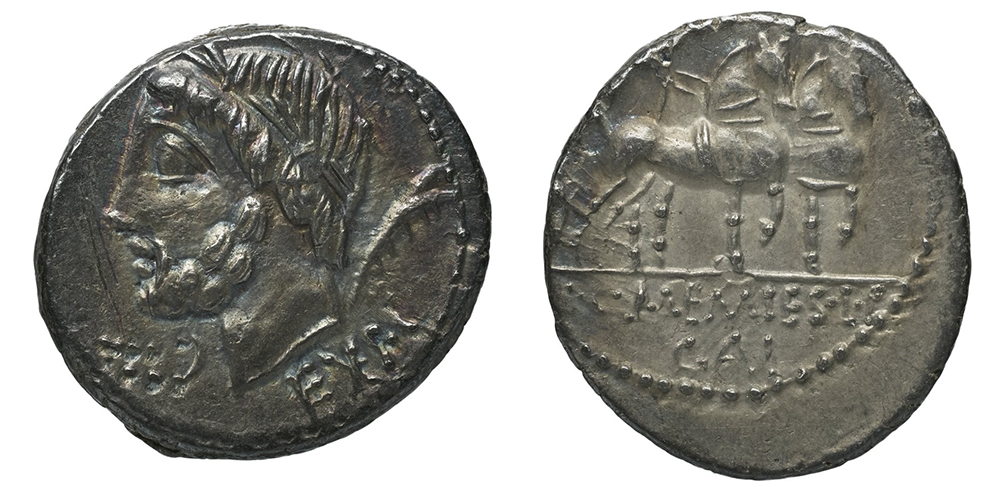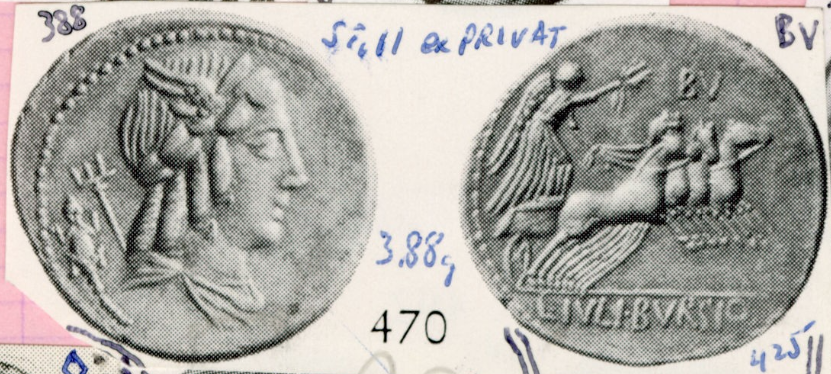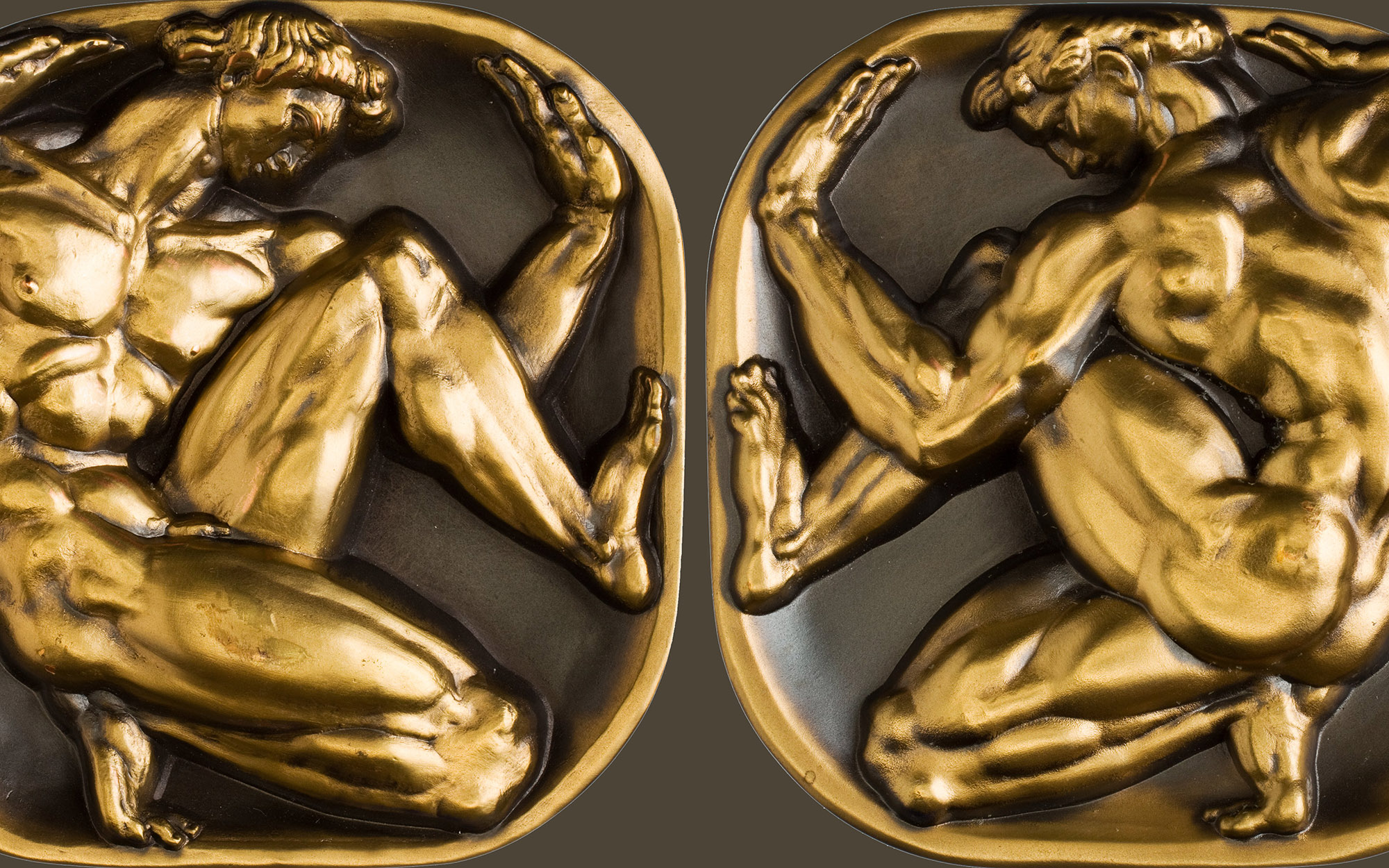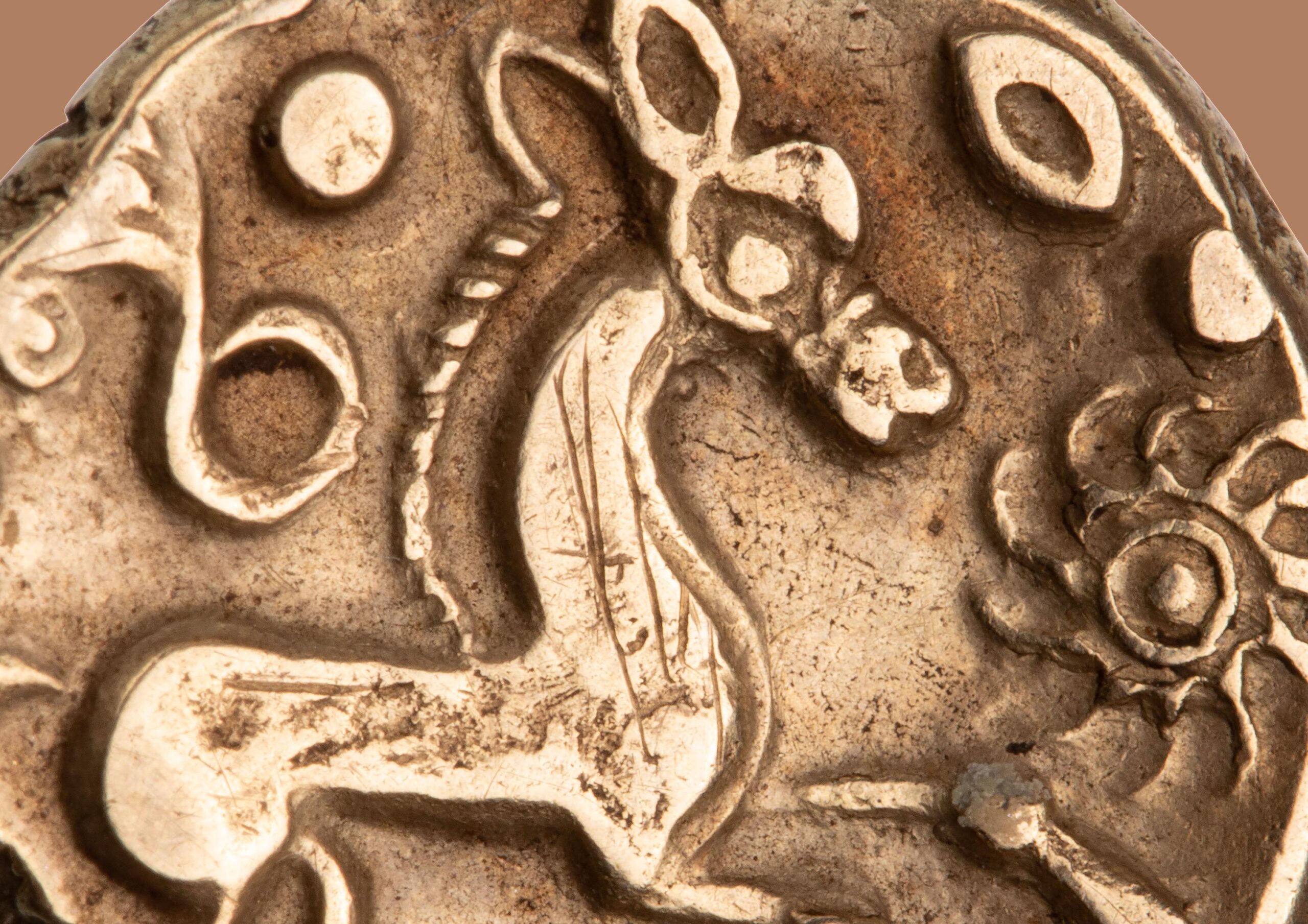More Control-Marked Issues Added to RRDP
Another batch of Roman Republican issues is now available through RRDP! The new release has brought the total number of dies represented in RRDP up to 6,275 and the number of specimens in SITNAM is now at 20,643. The new release includes the following RRC types:
Each of these issues includes a series of control marks on either the obverse die, reverse die, or both. RRC 360/1, 361/1, and 376/1 are part of ODEC (One Die for Every Control Mark). ODEC issues with numerical control marks are the best test of current quantification methods since presumably the highest control numeral should be equal to the original number of dies used to strike the issue. RRC 361/1 is a particularly important issue for this reason since the reverse dies bear numerical control marks that are used across all three subtypes. The highest numeral Schaefer identifies is 487 (CCCCLXXXVII, Fig. 1) or 488, though the reading is uncertain.

We would therefore assume there were originally at least 487 dies used to strike the whole issue. Based on observed reverse dies, Esty’s formulae predicts 475 original dies, with a confidence interval between 466–484 (Table 1): close to, but slightly lower than, the original number of dies predicted by ODEC. The die marks of Crepusius had previously been studied by Hersh (1952) and Buttrey (1976). Both Hersh and Buttrey identified control numerals into the 500s. Hersh had identified the highest numeral as 523, but Buttrey only counted up to 519, identifying the numeral Hersh read as 523 instead as 518 (on BnF, REP-10250). This, of course, implies a higher number of original dies and larger issue size than Schaefer’s archive suggests. The studies of Hersh and Buttrey provide some additional specimens that can in the future be incorporated into RRDP to expand Schaefer’s work and account for additional reverse control marks.
| Reverse Dies | Coins | d1 | Die estimated | Plus 95 | Minus 95 | Coverage | Approx. issue size |
| 412 | 3360 | 55 | 475 | 484 | 466 | 98.4 | 4.66–4.84 million |
Table 1. Production estimates for RRC 361/1 based on reverse die counts (Esty 2011)
In 1974, Crawford also identified RRC 349/1 as an issue with only one die per control mark. The obverse of this issue shows a laureate head of Saturn with a harpa behind and a control mark below the chin. The control marks are letters, usually written in reverse, alone or preceded by between one and seven dots (Fig. 2).

Although even ODEC issues occasionally have accidental duplicate marks, this issue has a high number of duplicates, particularly among letters alone. Of the 21 letters used, at least six appear on two dies and one (A) is used on three dies (Fig. 3); for letters with one preceding dot, at least five are duplicated (estimated coverage: 94%).


It seems that the issue may not have initially been intended to have only one die per control mark but that this was established only after once or twice through the alphabet. It is also possible the die cutters were less organized when beginning this issue and made more accidental duplications than later in the series (presuming the dots were added sequentially, which seems likely).
RRC 352/1c is another interesting test case for ODEC. 352/1c has marks on both the obverse and reverse dies (Fig. 4).

The obverse control marks are symbols which can be repeated on several dies. The reverse control marks take various forms (letters alone, letters with one or two dots, two letters, or numerals) and can appear either above or below the quadriga on the reverse. Based on the materials included in Schaefer’s archive, it seems that the lettered control marks are consistently used twice, once each above and below the quadriga (Fig. 5).


Numerical control marks, on the other hand, seem to only ever be used on one die. Schaefer’s archive includes only 186 specimens of this large subtype, which have been supplemented with an additional 317 specimens from Nomisma partner collections already represented in CRRO, giving a 503 analyzed specimens. From these there are 203 identified reverse dies of which 82 are represented only once. Following Esty (2011), this indicates a relatively low coverage of 83.7% suggesting that this is a good issue for further study especially to confirm the patterns in the reverse control marks. Schaefer’s archive also includes specimens of 352/1a which has obverse control marks, but does not include 352/1b which uses the same obverse dies as 352/1a and 1c and has no reverse control marks.
Another area that would be helpful to expand on Schaefer’s work is for RRC 363/1. Crawford divided this issue into four subtypes which are differentiated by use of control marks. Schaefer only includes only one of these subtypes: 363/1d, which is the largest but also the only one which does not include control marks on either die. Fortunately the control marks of 363/1 have been studied by Debernardi, Campana, et al. (2018), so Schaefer’s work on 363/1d serves as an important supplement to their die study.
The next stage of RRDP will focus expressly on ODEC issues with the goal of creating more data against which to test and refine current statistical methods of quantification, so this new batch of issues is an important addition to the corpus of control-marked issues included in RRDP to this point.




